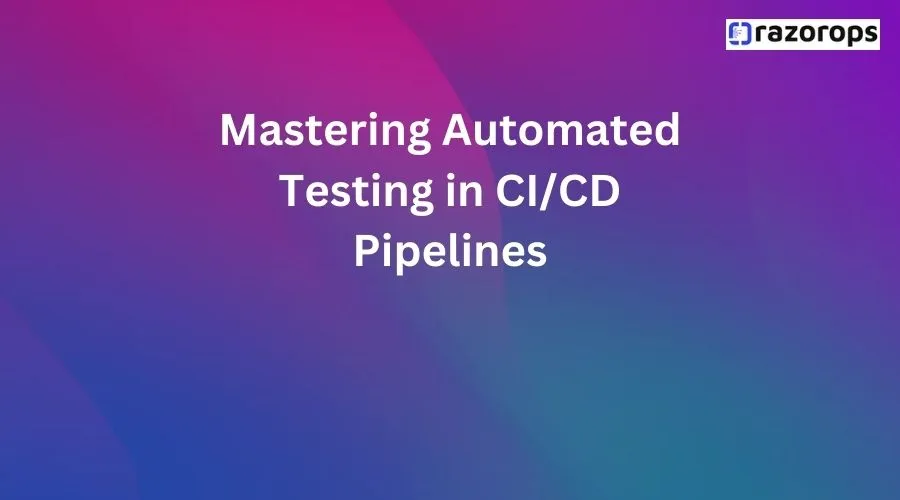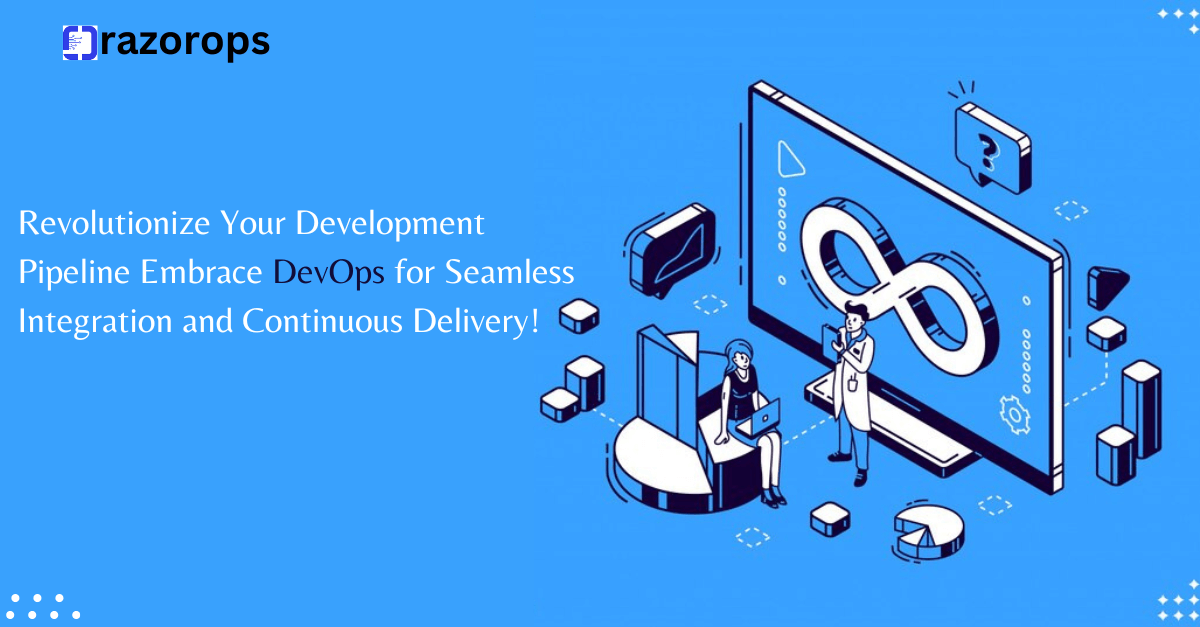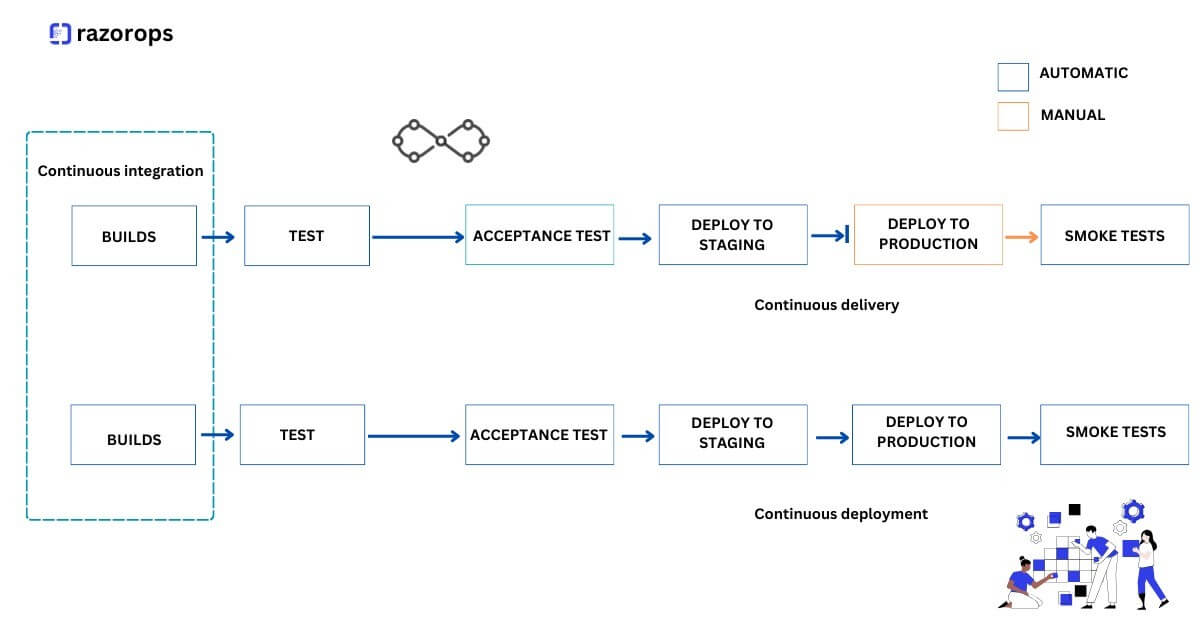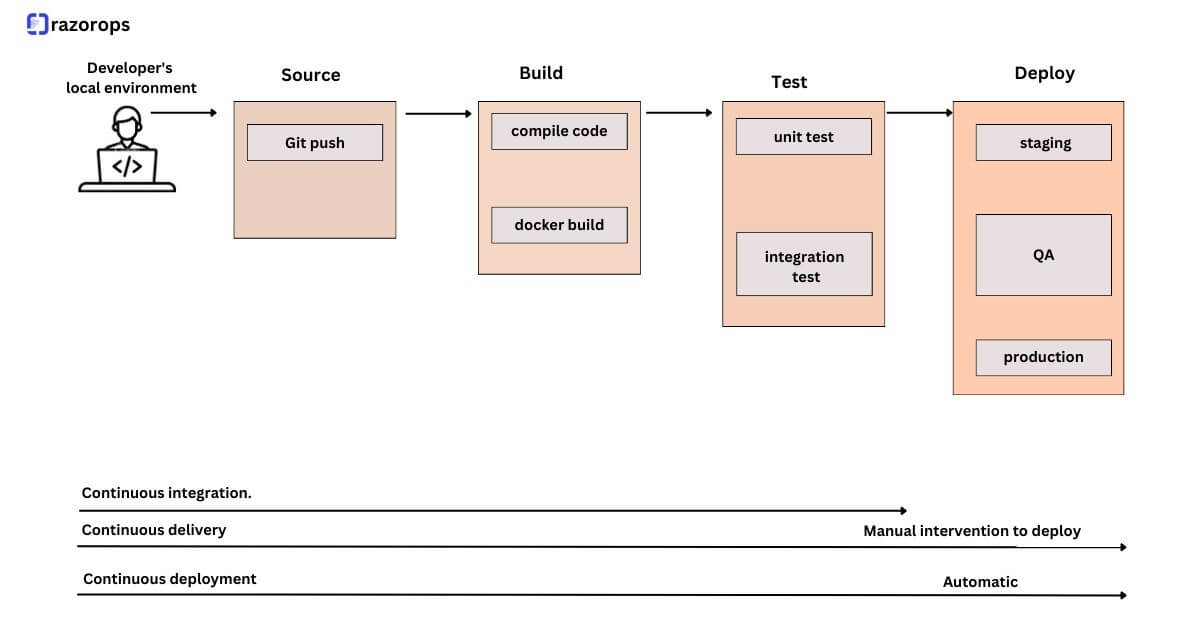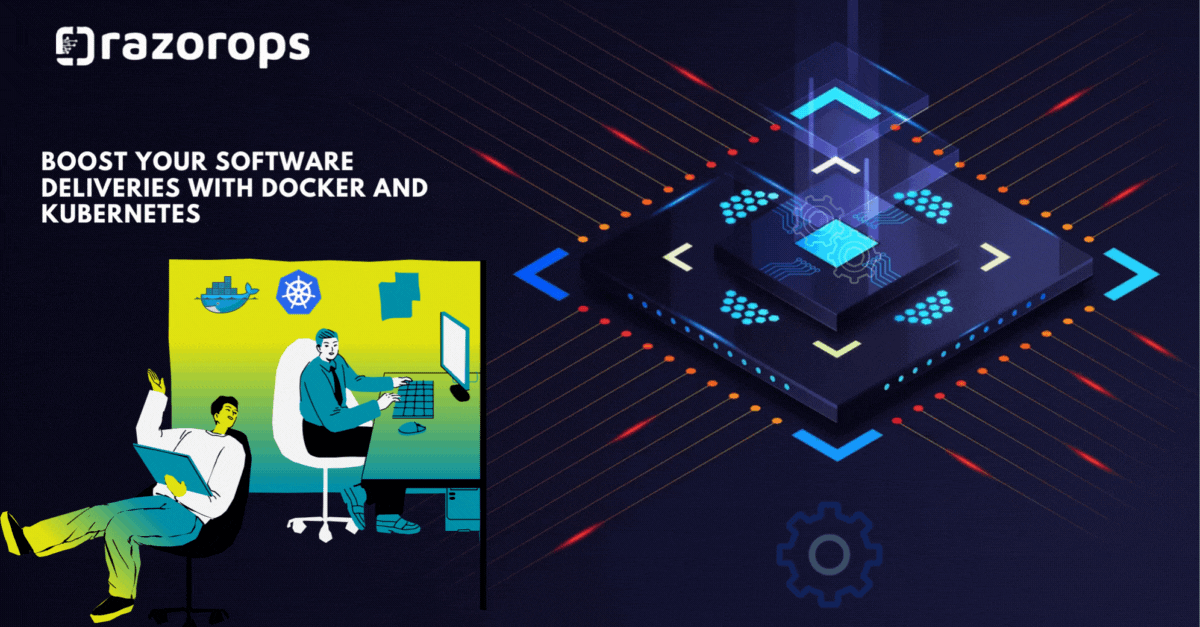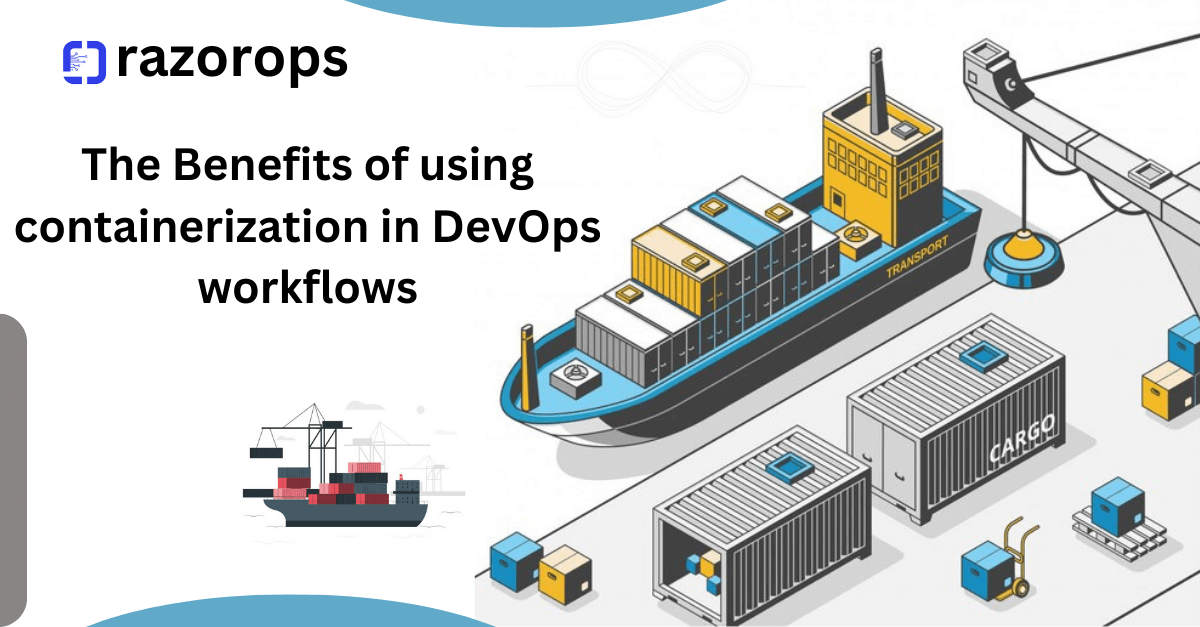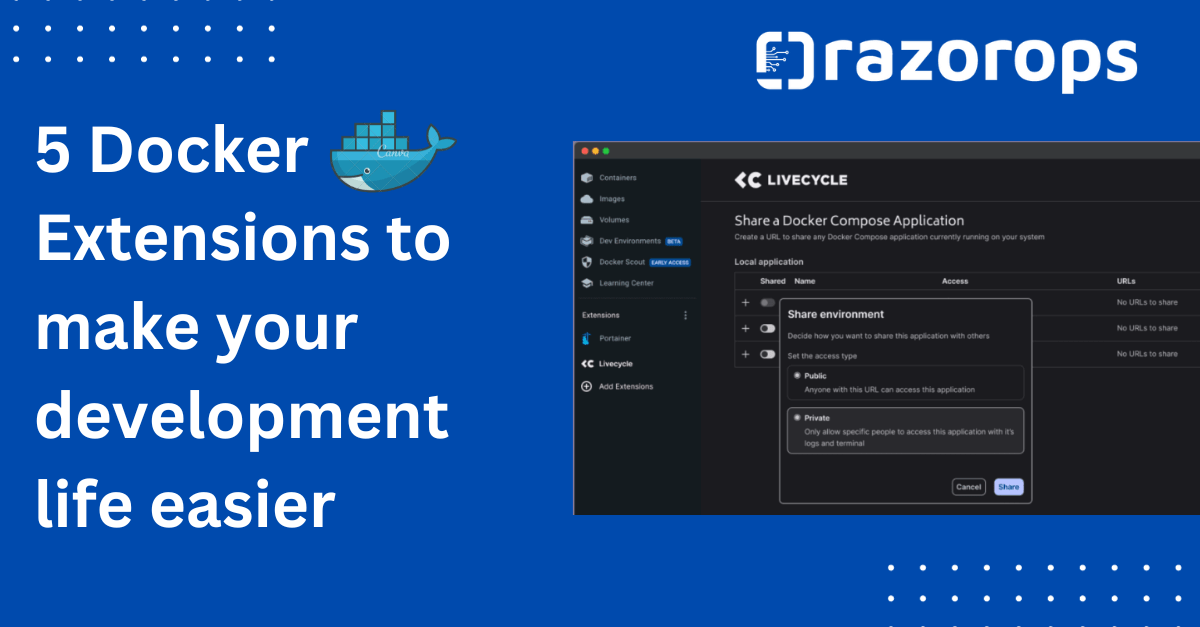Top 50 CICD Interview Questions and Answers

1. What is CI/CD?
Answer: CI/CD stands for Continuous Integration and Continuous Deployment/Delivery. It is a method to frequently deliver apps to customers by introducing automation into the stages of app development.
2. What are the benefits of CI/CD?
Answer: Benefits include faster time to market, reduced risk, improved quality, better collaboration, and continuous feedback.
3. What is Continuous Integration (CI)?
Answer: CI is a practice where developers frequently merge their code changes into a central repository, followed by automated builds and tests.
4. What is Continuous Deployment (CD)?
Answer: CD is an approach where every change that passes automated tests is automatically deployed to production.
5. What is Continuous Delivery (CD)?
Answer: Continuous Delivery is a development practice where code changes are automatically prepared for a release to production, but requires manual approval to deploy.
6. What tools are commonly used for CI/CD?
Answer: Common tools include Jenkins, Razorops CICD, GitLab CI, CircleCI, Travis CI, Bamboo, and Azure DevOps.
7. Explain the concept of a pipeline in CI/CD.
Answer: A pipeline is a set of automated processes that enable developers to deliver code changes more frequently and reliably.
8. What is a build server?
Answer: A build server is a dedicated machine or a set of machines that compile and build the project, run tests, and deploy applications.
9. How does version control integrate with CI/CD?
Answer: Version control systems (e.g., Git) are integrated with CI/CD pipelines to track changes in code, trigger builds, and ensure code consistency.
10. What is a build artifact?
Answer: A build artifact is a file, such as a binary, package, or library, produced by the build process that is ready for deployment or further testing.
11. What is a rolling deployment?
Answer: Rolling deployment is a method of deploying updates to an application in which the new version gradually replaces the old one, minimizing downtime.
12. What is a blue-green deployment?
Answer: Blue-green deployment is a strategy that reduces downtime and risk by running two identical production environments (blue and green), switching traffic between them.
13. How do you handle secrets in a CI/CD pipeline?
Answer: Secrets can be managed using secure storage solutions like environment variables, secret management tools (e.g., HashiCorp Vault), and CI/CD tools’ secret management features.
14. What is a canary release?
Answer: A canary release is a technique to reduce the risk of deploying a new version of software by gradually rolling out the change to a small subset of users before full deployment.
15. Explain infrastructure as code (IaC) in the context of CI/CD.
Answer: IaC is the practice of managing and provisioning computing infrastructure through code, enabling automation and consistency in infrastructure deployment.
###
16. How do you configure a Jenkins pipeline?
Answer: A Jenkins pipeline can be configured using a Jenkinsfile, which is a text file that defines the steps for building, testing, and deploying the application.
17. What are GitLab CI/CD stages and jobs?
Answer: Stages in GitLab CI/CD define the phases of a pipeline (e.g., build, test, deploy), while jobs are the tasks performed within those stages.
18. What is Travis CI and how does it work?
Answer: Travis CI is a CI service that integrates with GitHub and runs automated tests for your projects. It uses a .travis.yml file to define the build process.
19. How do you use CircleCI for deployment?
Answer: CircleCI uses a configuration file (.circleci/config.yml) to define pipelines, which can include steps for deployment using various deployment tools and services.
20. What is Bamboo, and what are its key features?
Answer: Bamboo is an Atlassian CI/CD server that integrates with other Atlassian products and provides automated build, test, and release management.
###
21. How do you debug a failed build in Jenkins?
Answer: Check the console output for errors, review recent changes in the code, validate configuration files, and ensure that all dependencies are met.
22. What are common CI/CD pipeline issues and how do you resolve them?
Answer: Common issues include build failures, test failures, and deployment failures. Resolution steps include debugging the code, checking logs, ensuring correct environment configurations, and verifying network connectivity.
23. How do you handle flaky tests in a CI pipeline?
Answer: Flaky tests can be handled by identifying the cause, stabilizing the test environment, implementing retries, or refactoring the test code.
24. What is a failed deployment rollback, and how is it handled?
Answer: A rollback is the process of reverting to a previous stable state after a failed deployment. It can be automated using CI/CD tools and deployment strategies like blue-green or canary releases.
25. How do you ensure security in your CI/CD pipeline?
Answer: Security can be ensured by implementing code analysis tools, using secure storage for secrets, ensuring minimal permissions, and conducting regular security audits.
###
26. What are some CI/CD best practices?
Answer: Best practices include maintaining a clean and consistent codebase, automating tests, using version control, regularly reviewing pipeline configurations, and monitoring the CI/CD process.
27. How do you ensure high availability in a CI/CD pipeline?
Answer: High availability can be ensured by using redundant build servers, load balancing, frequent backups, and monitoring the pipeline for failures.
28. What is the importance of code quality in CI/CD?
Answer: High code quality ensures fewer bugs, easier maintenance, and better performance, leading to more reliable and efficient CI/CD processes.
29. How do you manage dependencies in a CI/CD pipeline?
Answer: Dependencies can be managed using dependency management tools (e.g., Maven, npm), ensuring consistent environments, and automating dependency updates.
30. How do you implement testing in CI/CD?
Answer: Testing can be implemented by integrating unit tests, integration tests, and end-to-end tests into the pipeline, running them automatically on each code change.
31. What is the role of containers in CI/CD?
Answer: Containers provide a consistent environment for builds, tests, and deployments, improving reproducibility and reducing conflicts.
32. How do microservices impact CI/CD?
Answer: Microservices require independent deployment pipelines, more granular tests, and orchestration tools to manage dependencies and communication between services.
33. What are the challenges of implementing CI/CD in large organizations?
Answer: Challenges include managing complex pipelines, ensuring security, handling large-scale infrastructure, and fostering collaboration across teams.
34. What is a monorepo, and how does it relate to CI/CD?
Answer: A monorepo is a single repository containing multiple projects. In CI/CD, it simplifies dependency management but requires more sophisticated build and deployment strategies.
35. How do you handle database migrations in a CI/CD pipeline?
Answer: Database migrations can be handled using migration tools (e.g., Flyway, Liquibase), running migrations as part of the deployment process, and ensuring rollback mechanisms.
36. Describe a scenario where you had to troubleshoot a failing deployment.
Answer: Provide a detailed example from your experience, including the steps you took to identify and resolve the issue.
37. How would you set up a CI/CD pipeline for a new project from scratch?
Answer: Outline the steps, including choosing tools, configuring version control, setting up build and test stages, and implementing deployment strategies.
38. What steps would you take to migrate an existing project to a CI/CD pipeline?
Answer: Assess the current state, choose appropriate CI/CD tools, configure pipelines, migrate code and tests, and ensure smooth transitions with minimal disruptions.
39. How do you handle a situation where the pipeline becomes a bottleneck?
Answer: Identify the cause of the bottleneck, optimize the slow steps, parallelize tasks, and consider scaling resources.
40. Explain a time when you improved an existing CI/CD process.
Answer: Provide a specific example, detailing the changes you made, the challenges you faced, and the results of your improvements.
41. How do you promote CI/CD best practices in a team?
Answer: Encourage collaboration, provide training, implement code reviews, share success stories, and continuously improve the process based on feedback.
42. What is the role of documentation in CI/CD?
Answer: Documentation ensures that the pipeline is understandable and maintainable, helping new team members get up to speed and providing a reference for troubleshooting.
43. How do you handle team collaboration in CI/CD?
Answer: Use communication tools, regular meetings, code reviews, and collaborative platforms to ensure everyone is aligned and informed.
44. What metrics do you track in a CI/CD pipeline?
Answer: Common metrics include build
45. What is Mean Time to Recovery (MTTR) and why is it important?
Answer: MTTR measures the average time taken to recover from a failure. It’s important for understanding the reliability and robustness of your deployment process.
46. How do you monitor the performance of a CI/CD pipeline?
Answer: Monitor using CI/CD tool dashboards, custom monitoring scripts, log analysis, and alerting systems to detect failures or performance issues.
47. What is the change failure rate and how do you manage it?
Answer: The change failure rate is the percentage of changes that result in a failure in production. Manage it by improving testing, code reviews, and implementing better rollback mechanisms.
48. How do you ensure continuous feedback in a CI/CD pipeline?
Answer: Implement continuous monitoring, automated alerts, regular reporting, and feedback loops with developers to address issues promptly.
49. How is CI/CD implemented in regulated industries (e.g., healthcare, finance)?
Answer: Implementing CI/CD in regulated industries involves strict compliance with industry standards, secure handling of data, audit trails, and often requires additional approval steps in the pipeline.
50. What are the key considerations for implementing CI/CD in a multi-cloud environment?
Answer: Considerations include ensuring consistent environments across clouds, managing cross-cloud networking, handling cloud-specific services, and maintaining cloud-agnostic CI/CD pipelines.

